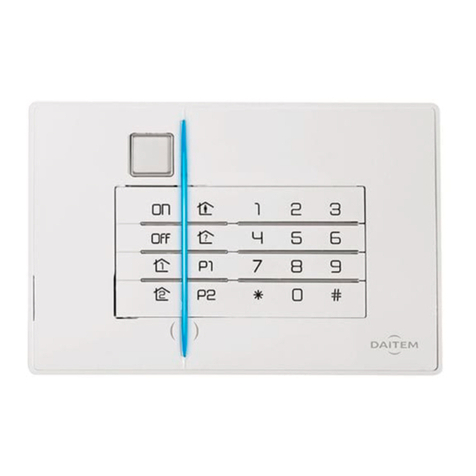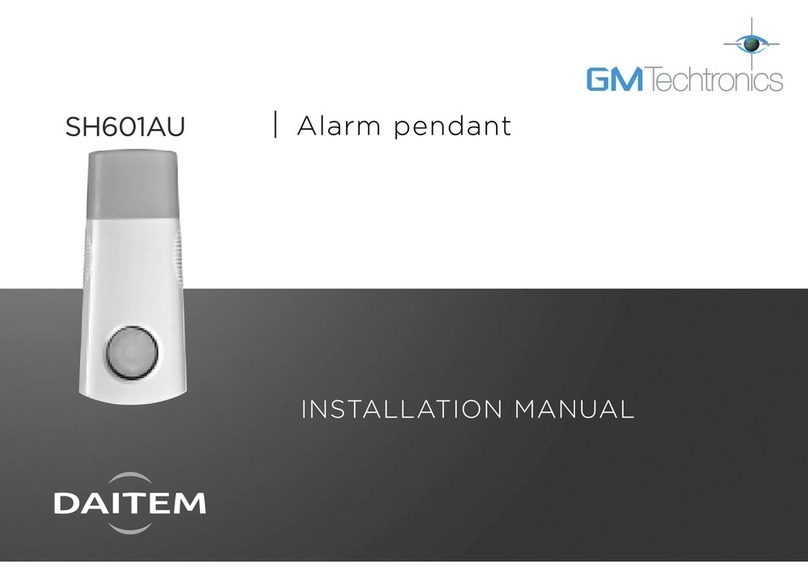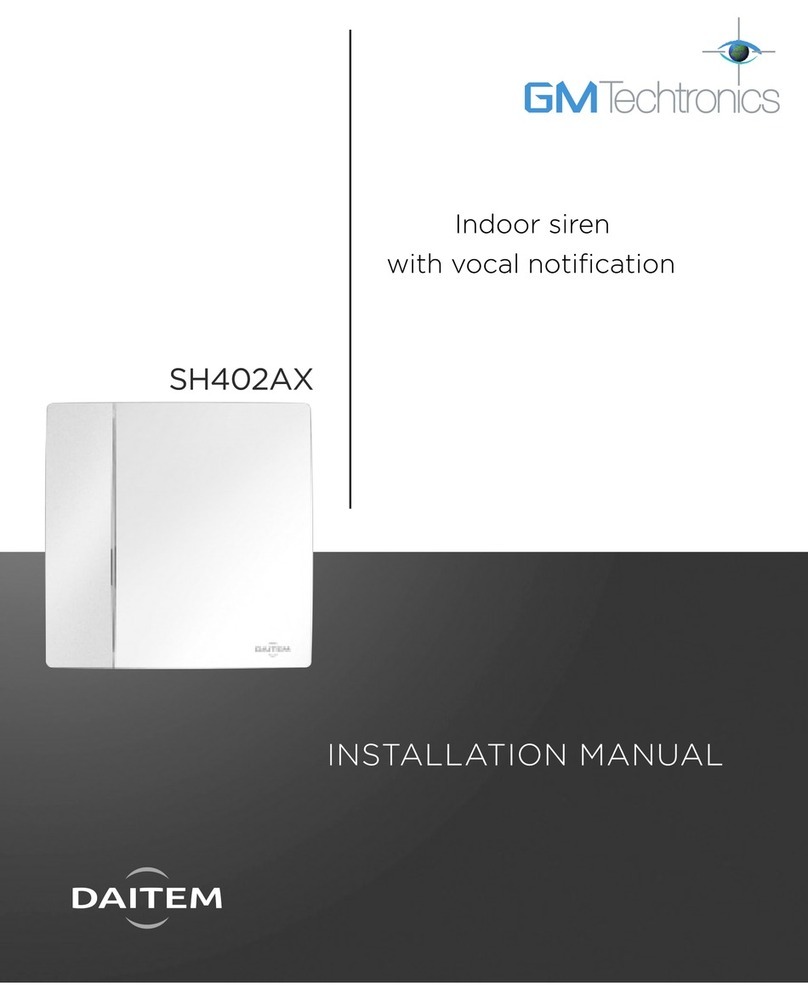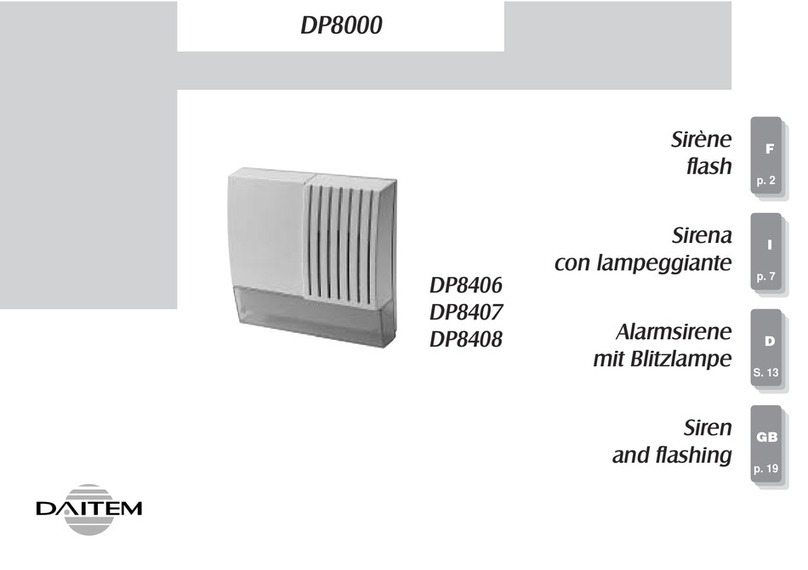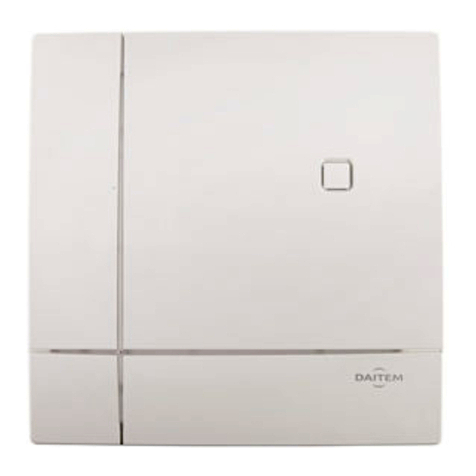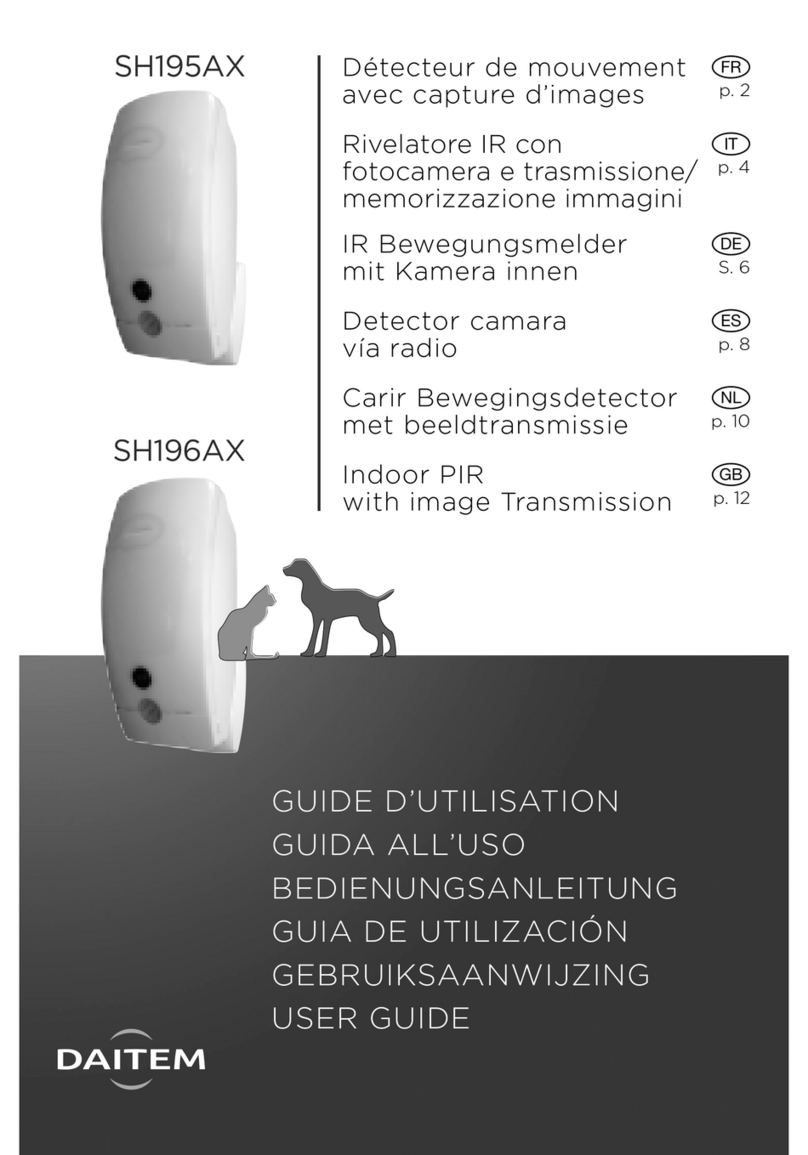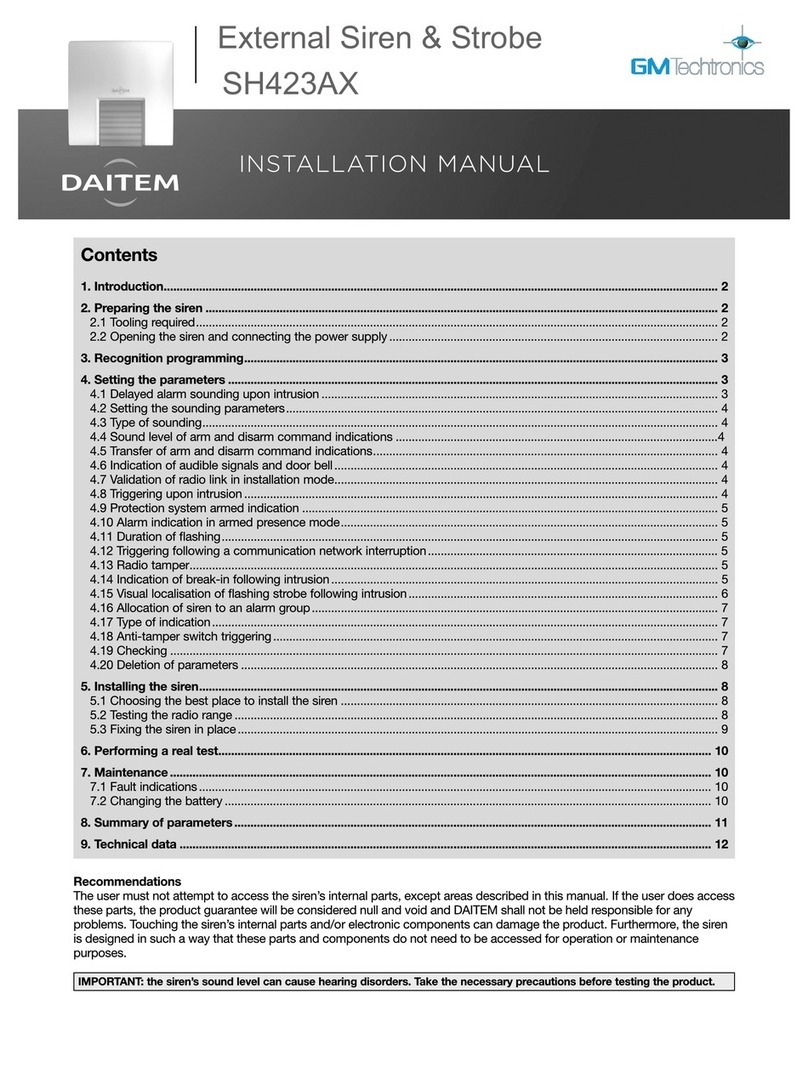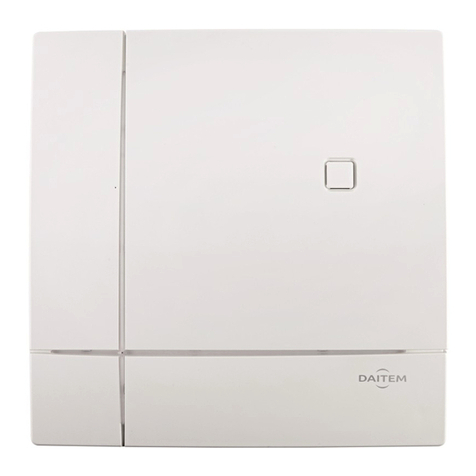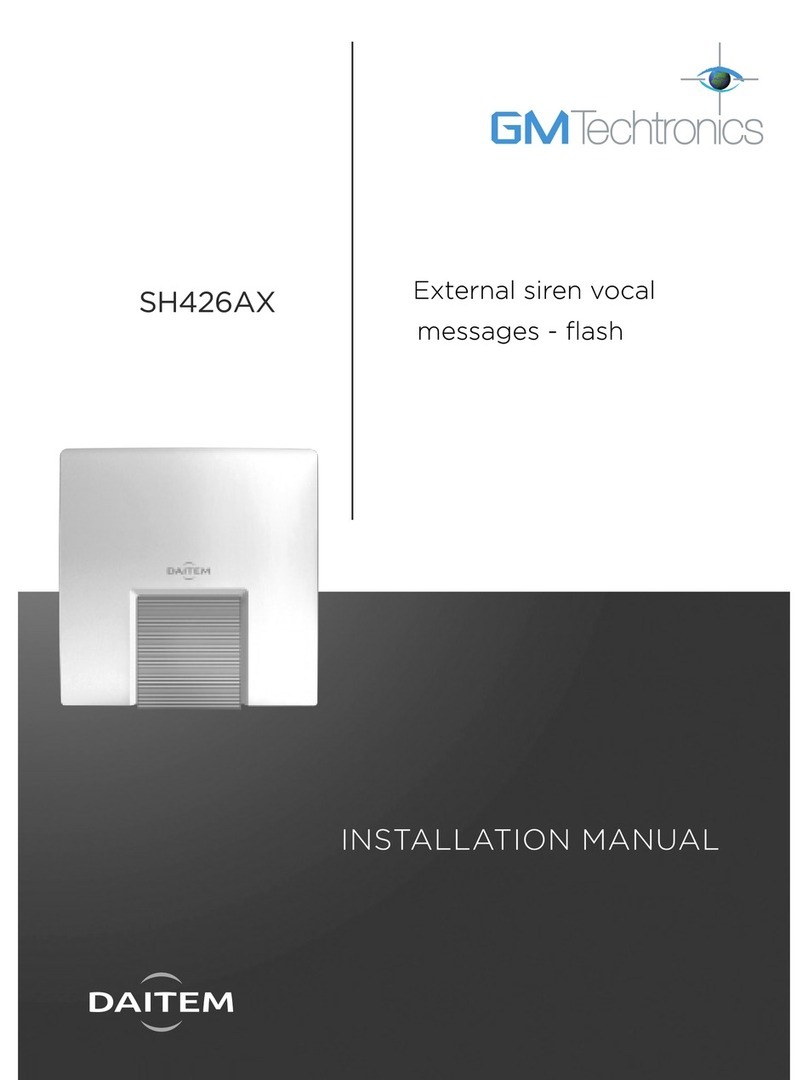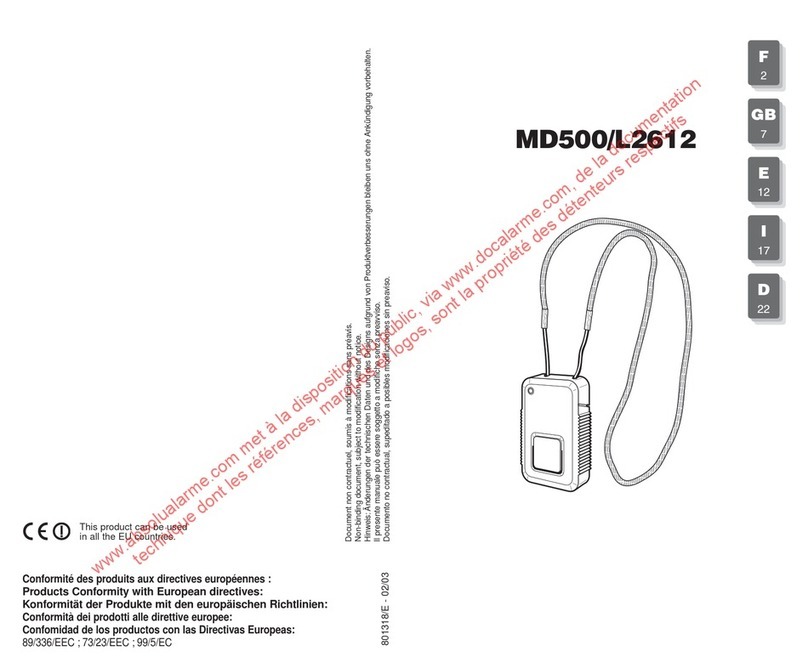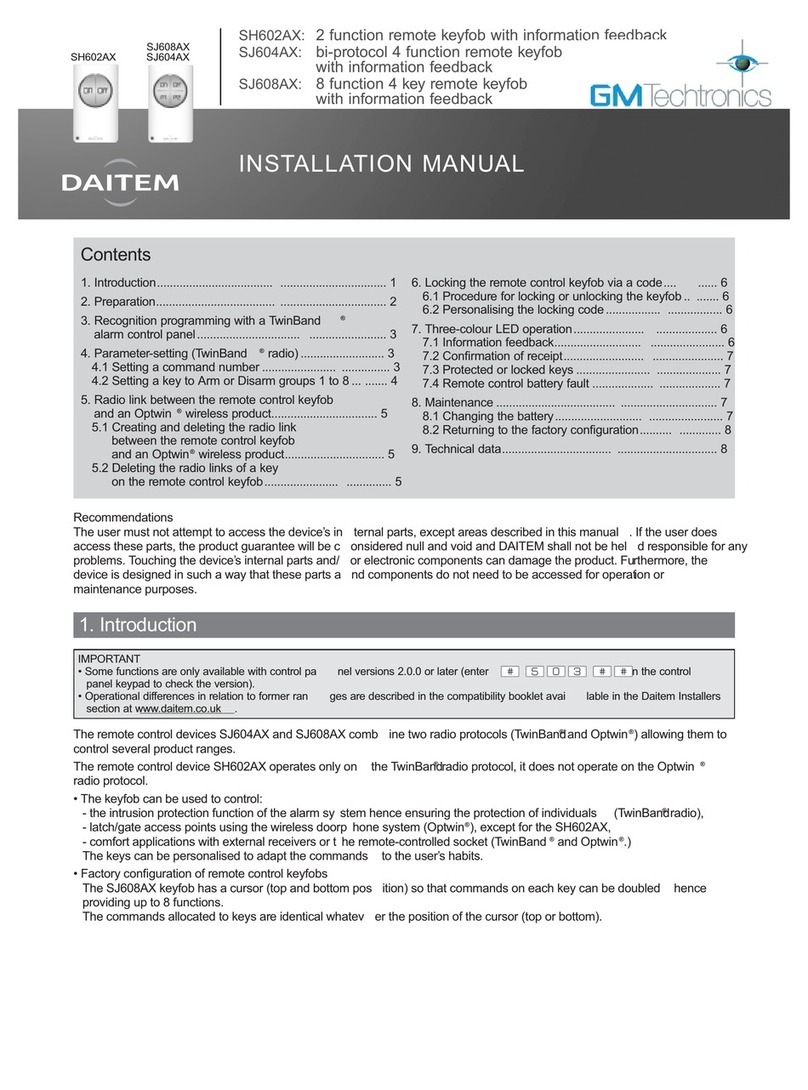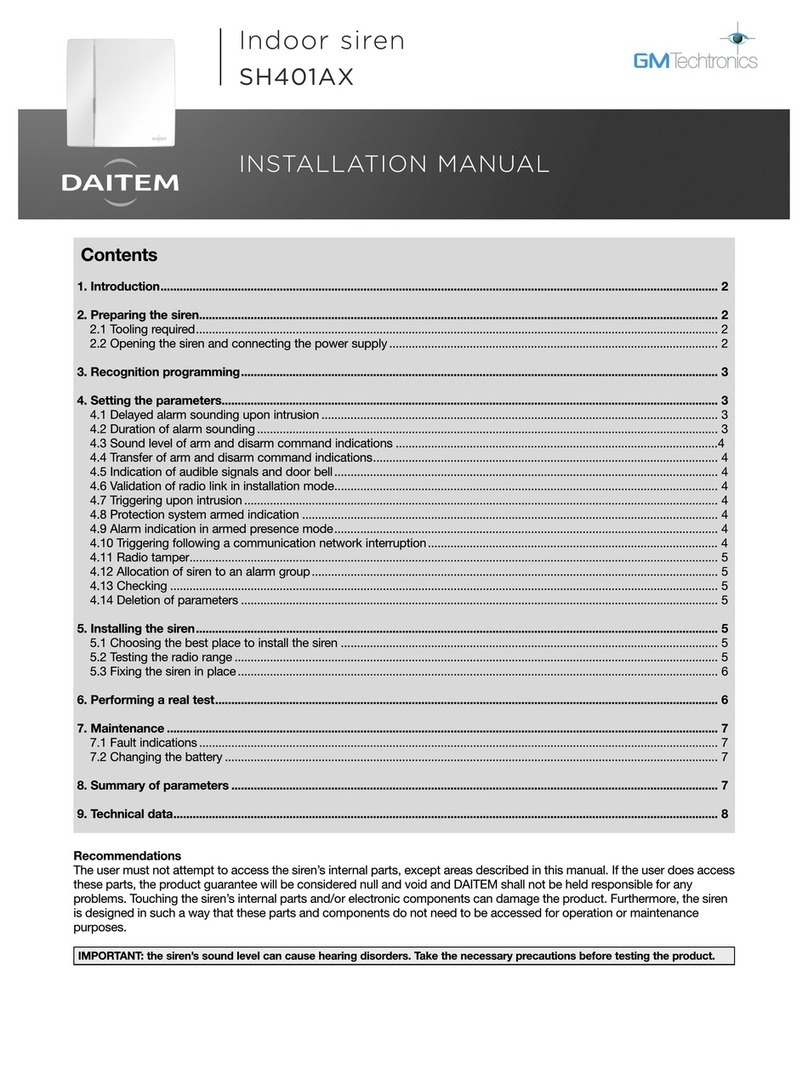B
72
Contents
1. Introduction .................... 72
2. Preparation ..................... 73
2.1 Opening
the detector................ 73
2.2 Description................. 73
2.3 Power supply............. 74
3. Recognition
programming.................. 75
4. Parameter-setting.......... 76
5. Installation
precautions..................... 77
6. Installing the detector ... 77
6.1 Fixing the detector
in place....................... 78
6.2 Setting the
detection range.......... 80
6.3 Setting the vertical
angle........................... 81
7. Operating options.......... 82
8. Testing operation ........... 83
8.1 Testing the
detection zone ........... 83
8.2 Performing
a real test.................... 83
9. Maintenance................... 84
9.1 Fault indications......... 84
9.2 Changing
the battery.................. 84
10. Technical data .............. 85
1. Introdu tion
The detector comprises a mechanical device for adjusting the
detection zone. The protected area can be checked with the
help of a LED located behind the lens.
9 m
3 m
5,5 m
3 m
8 m
12 m
0
8 m
Top view
Side view
Adhesive masking strips (supplied)
The 12 m external motion detector with
anti-mask feature detects intruders
before they break in. Fitted with a
specific lens and two infrared sensors,
the detector can tell the difference
between a human being and a small
animal. Combined with internal
electronics, the anti-mask feature
detects attempts to mask the detector.
Its detection angle can be adjusted by
adding masking strips to the lens. The
detector’s sensitivity can be set to
reduce the likelihood of false alarms
triggered by movement (cars, persons or
animals outside of the required detection
zone). The ideal installation height is
between 2.5 and 3 m as this makes it
difficult for intruders to access the
detector.
IMPORTANT
• Some functions are only available with control panel version 2.0.0 or later (enter )
on the control panel keypad to check the version).
• Operating differences with respect to former ranges are described in the compatibility booklet available
in the Daitem Installers section at www.daitem.co.uk.

